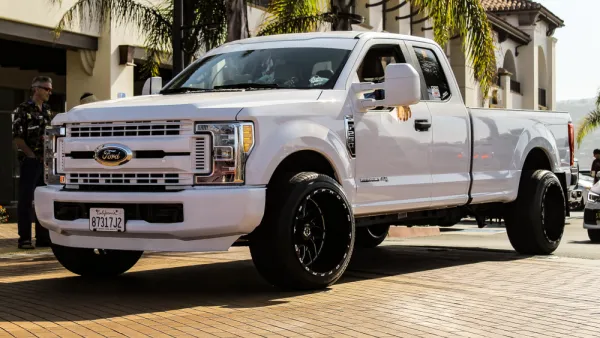Gasoline consumption in the U.S. peaked in 2007, but began climbing in late 2014 with the decline in gas prices. Last year almost set a new record, but increases in gas prices, fuel efficiency and more EVs could reverse the direction—but when?

Due to historically low gas prices and American consumers' preference for sport utility vehicles, gasoline consumption has been increasing for the last three years, though it has yet to surpass the 2007 peak of 9.29 million barrels per day (MMBD).
In October, the Federal Highway Administration reported that the increase in gasoline consumption from January through June of 2016 had increased at a record rate. Some analysts predicted that 2016 would break the 2007 peak.
However, preliminary data released by EIA on January 10 indicates that 2016 gasoline consumption was about 9.28 MMBD, just 10,000 barrels per day shy of the 2007 peak.
But it won't stand for long, as EIA forecasts that consumption will increase to 9.32 MMBD this year, and 9.41 MMBD next year
But Nick Cunningham, energy and environmental issues writer for OilPrice.com, believes consumption will be reduced but to an increase in oil prices stemming from a November OPEC agreement to reduce output that took effect on New Year's Day, and long-term regulatory forces.
"There is no guarantee that U.S. gasoline consumption will continue to expand, however, particularly now that oil prices are on the rise," reports Cunningham on January 5.
According to GasBuddy, American motorists could end up spending an additional $52 billion on gasoline in 2017 compared to last year. GasBuddy estimates gasoline prices will average $2.49 per gallon this year, compared to the 2016 average of just $2.13 per gallon. “It may be years before some of the low prices we saw in 2016 come back,” Patrick DeHaan, Senior Petroleum Analyst at GasBuddy, wrote in a research note.
However, the only certainty in forecasting oil prices is uncertainty. Just four days later, Cunningham reported that oil prices were faltering, followed a week later by "oil prices could fall sharply" due to a production resurgence.
There may be more certainty in the passenger fleet composition, even with Americans' preference for sport and crossover utility vehicles.
"Over the longer-term, consumers will be offered a lot more choices for fuel-efficient and electric vehicles [EVs]," adds Cunningham.
Tesla announced [January 4] that its gigafactory in Nevada has started mass production of lithium-ion batteries hat will be used in its vehicles as well as its home energy storage systems. When production reaches its peak next year, the factory will be producing about as much battery capacity as the rest of the world combined. The added supply will bring down costs, allowing EVs to become more affordable.
Perhaps most intriguing was Ford’s announcement that it would offer an electric-hybrid version of its F-150 truck, the best-selling vehicle in the entire country. It will also release an all-electric SUV with 300 miles of range. Both could be in production by 2020.
According to the University of Michigan's Transportation Research Institute, the "sales-weighted fuel economy" for model years 2014 through 2016 remained stable at 24.1. While sales of electric vehicles (EVs) have increased, they constituted less than one percent of passenger vehicle sales last year. However, an increase in efficiency of light trucks may be enough to reverse the increase in gas consumption, particularly if fuel prices increase as well.
-
2016: Year of the Sports Utility Vehicle, January 10, 2017.
-
U.S. Gasoline Consumption Jumps Three Percent in First Six Months of 2016, November 1, 2016.
FULL STORY: Has U.S. Gasoline Demand Peaked?

Analysis: Cybertruck Fatality Rate Far Exceeds That of Ford Pinto
The Tesla Cybertruck was recalled seven times last year.

National Parks Layoffs Will Cause Communities to Lose Billions
Thousands of essential park workers were laid off this week, just before the busy spring break season.

Retro-silient?: America’s First “Eco-burb,” The Woodlands Turns 50
A master-planned community north of Houston offers lessons on green infrastructure and resilient design, but falls short of its founder’s lofty affordability and walkability goals.

Test News Post 1
This is a summary

Analysis: Cybertruck Fatality Rate Far Exceeds That of Ford Pinto
The Tesla Cybertruck was recalled seven times last year.

Test News Headline 46
Test for the image on the front page.
Urban Design for Planners 1: Software Tools
This six-course series explores essential urban design concepts using open source software and equips planners with the tools they need to participate fully in the urban design process.
Planning for Universal Design
Learn the tools for implementing Universal Design in planning regulations.
EMC Planning Group, Inc.
Planetizen
Planetizen
Mpact (formerly Rail~Volution)
Great Falls Development Authority, Inc.
HUDs Office of Policy Development and Research
NYU Wagner Graduate School of Public Service


























